Giraffe
- February 22, 2024
- 0 comment
Giraffes, the majestic giants of the African savannah, are iconic symbols of grace and beauty. With their long necks and towering height, they stand as the tallest land animals on Earth, reaching up to 18 feet in height. Their distinctive coat patterns, characterized by irregular patches of dark spots or splotches separated by lighter areas, provide them with effective camouflage in their habitat. Found primarily in savannahs, grasslands, and open woodlands across sub-Saharan Africa, giraffes have adapted to diverse environments and are well-known for their ability to browse foliage high above the ground.

Despite their enormous size, giraffes are herbivores, feeding on leaves, shoots, and twigs of trees and shrubs. They are social animals, forming loose-knit groups known as towers or herds, with females and their offspring making up the core of these groups. Males sometimes form smaller bachelor herds. Giraffes communicate with each other through vocalizations, body postures, and visual signals, establishing hierarchies within their groups. During the breeding season, males engage in necking contests to establish dominance and gain mating rights.
Female giraffes have a gestation period of approximately 15 months and give birth to a single calf, which is precocial and able to stand and walk shortly after birth. Giraffes face threats from habitat loss, poaching, and human-wildlife conflict, making conservation efforts critical for their survival. These remarkable animals hold symbolic importance in various cultures and civilizations, symbolizing grace, elegance, and the beauty of the natural world. Overall, giraffes continue to fascinate and inspire people around the world with their extraordinary presence and unique characteristics.
| Specification | Description |
|---|---|
| Scientific Name | Giraffa camelopardalis |
| Average Height | Up to 18 feet (5.5 meters) |
| Weight | Between 1,750 and 2,800 pounds (800 to 1,300 kilograms) |
| Habitat | Savannahs, grasslands, and open woodlands across sub-Saharan Africa |
| Range | Primarily in East Africa, including countries such as Kenya, Tanzania, and Uganda |
| Diet | Herbivorous, feeding primarily on leaves, shoots, and twigs of trees and shrubs |
| Social Structure | Form loose-knit groups known as towers or herds, consisting of females and their offspring |
| Communication | Vocalizations (grunts, snorts, bleats), body postures, and visual signals |
| Reproduction | Gestation period of approximately 15 months, give birth to a single calf |
| Conservation Status | Considered “Vulnerable” by the IUCN Red List due to habitat loss, poaching, and human-wildlife conflict |
| Symbolism | Portrayed as symbols of grace, elegance, and the beauty of the natural world in various cultures |
Majestic Creatures of the African Savannah

Giraffes are among the most iconic and majestic creatures found in the African savannah. With their towering height, distinctive coat patterns, and graceful movements, they captivate the imagination of people around the world. In this article, we’ll delve into the fascinating world of giraffes, exploring their physical characteristics, habitat, behavior, and conservation status.
Physical Characteristics
Height and Size
Giraffes are known for their extraordinary height, standing tall as the tallest land animals on the planet. Adult giraffes can reach heights of up to 18 feet, with males being slightly taller than females. Their long legs and necks allow them to browse foliage high above the ground, giving them a distinct advantage in the savannah landscape.

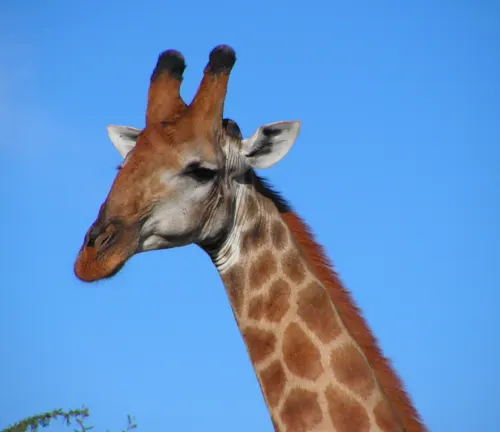
Neck and Ossicones
One of the most recognizable features of giraffes is their long necks, which can measure up to 6 feet in length. Contrary to popular belief, giraffes have the same number of neck vertebrae as most mammals, but each vertebra is elongated. Additionally, giraffes possess ossicones, which are bony protrusions on the top of their heads. These structures are covered in skin and hair and are present in both male and female giraffes.
Coat Pattern
The coat pattern of giraffes is unique to each individual, much like human fingerprints. The irregular patches of dark spots or splotches are separated by lighter areas, providing camouflage in the dappled sunlight of their habitat. This distinctive coat pattern also helps to regulate their body temperature by dissipating heat.
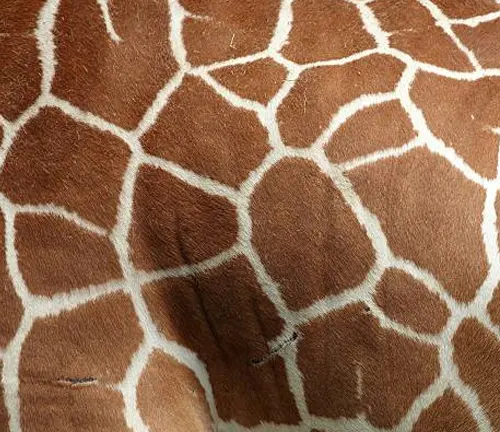
Habitat and Distribution
Where do Giraffes Live?
Giraffes are primarily found in savannahs, grasslands, and open woodlands across sub-Saharan Africa. They are most commonly associated with the plains of East Africa, including countries such as Kenya, Tanzania, and Uganda.

Habitat Preferences
Within their range, giraffes prefer areas with scattered trees and shrubs, which provide both food and shade. They are well adapted to arid environments and can go for long periods without water by obtaining moisture from the vegetation they consume.
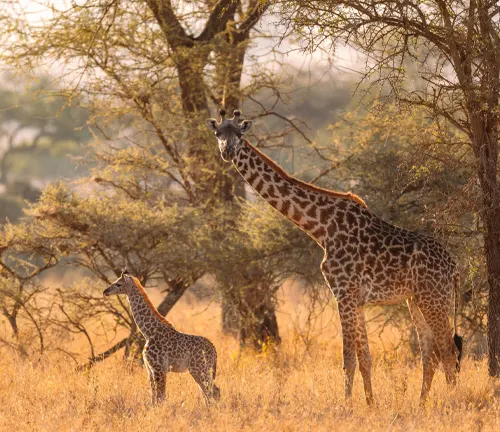
Diet and Feeding Behavior
What do Giraffes Eat?
Despite their towering height, giraffes are herbivores, feeding primarily on the leaves, shoots, and twigs of trees and shrubs. Their long tongues and prehensile lips allow them to grasp and strip foliage from branches, while their specialized digestive system helps break down tough plant material.

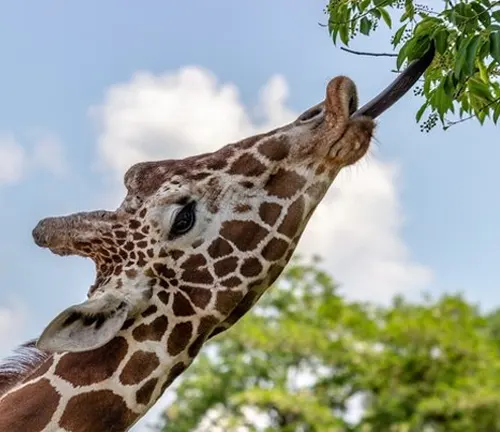
Feeding Habits
Giraffes are browsers, meaning they selectively feed on specific parts of plants rather than grazing on grass like many other herbivores. They use their keen sense of smell and sight to locate preferred food sources and will often travel long distances in search of fresh vegetation.
Social Structure and Behavior
Group Dynamics
Giraffes are social animals that form loose-knit groups known as towers or herds. These groups typically consist of females and their offspring, with adult males sometimes forming smaller bachelor herds. While they are not highly territorial, giraffes will establish hierarchies within their groups through displays of dominance.
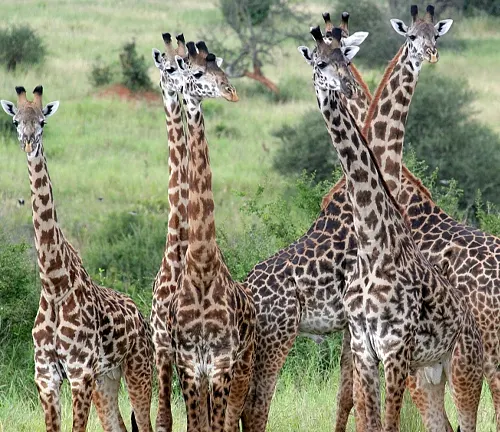
Communication Methods
Giraffes communicate with each other through various vocalizations, including grunts, snorts, and bleats. They also use visual signals such as body postures, head movements, and tail flicks to convey messages and establish social bonds.
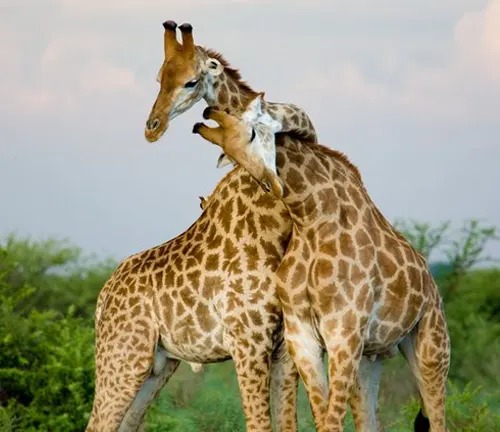
Reproduction and Life Cycle
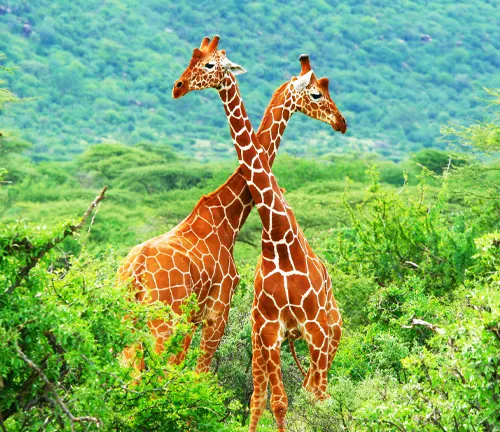
Mating Rituals
During the breeding season, male giraffes engage in necking contests to establish dominance and gain access to females. Once a dominant male has secured mating rights, he will court a female by following her closely and nuzzling her neck.
Gestation Period
Female giraffes have a gestation period of approximately 15 months, after which they give birth to a single calf. Newborn giraffes are precocial, meaning they are born fully developed and able to stand and walk within hours of birth.
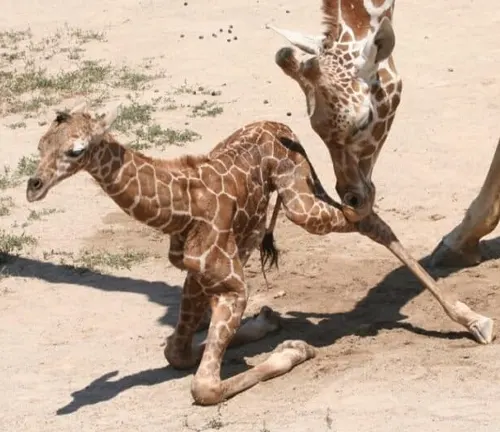
Offspring Care
Mother giraffes are highly attentive to their calves, nursing them for up to a year and providing protection from predators. Young giraffes stay close to their mothers for the first few months of life before gradually gaining independence.

Threats and Conservation Status
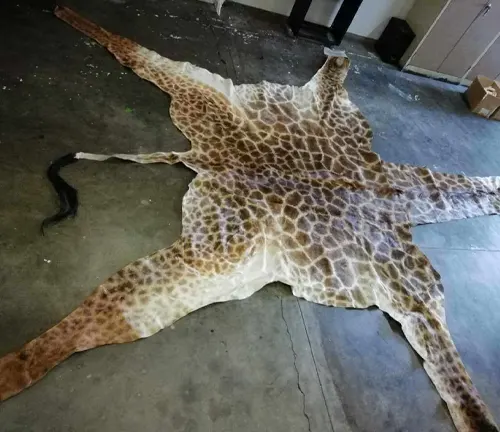
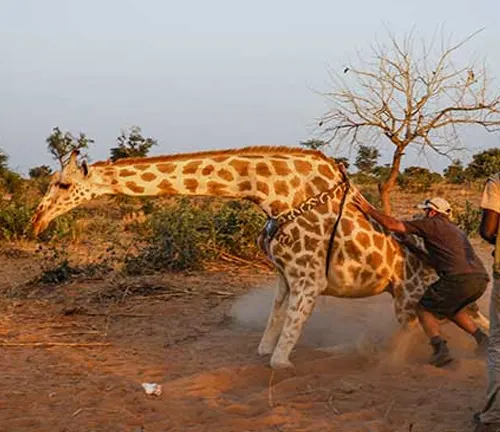
Human-Related Threats
Giraffes face numerous threats from human activities, including habitat loss, poaching, and conflict with livestock. The expansion of agriculture and urban development has led to the fragmentation of giraffe habitats, while illegal hunting for their meat, hides, and tails continues to pose a significant risk.
Conservation Efforts
Efforts to conserve giraffe populations are underway across Africa, with initiatives focusing on habitat protection, anti-poaching measures, and community-based conservation programs. Conservation organizations are also working to raise awareness about the plight of giraffes and promote sustainable coexistence with local communities.
Giraffes in Culture and Symbolism
Historical Significance
Throughout history, giraffes have fascinated and inspired people from various cultures and civilizations. They have been depicted in ancient Egyptian art, symbolizing grace, elegance, and spiritual significance.
Modern Representations
In modern times, giraffes continue to hold symbolic importance in art, literature, and popular culture. They are often portrayed as symbols of curiosity, adaptability, and the beauty of the natural world.
Different Species

Nubian Giraffe
(Giraffa camelopardalis camelopardalis)
Found primarily in northeastern Africa, including countries such as Sudan, Ethiopia, and South Sudan. It has large, irregular spots with a cream-colored background.
Reticulated Giraffe
(Giraffa camelopardalis reticulata)
Native to the Horn of Africa, including Kenya, Somalia, and Ethiopia. It is characterized by a striking coat pattern of sharp-edged, polygonal spots that are neatly separated by white lines.
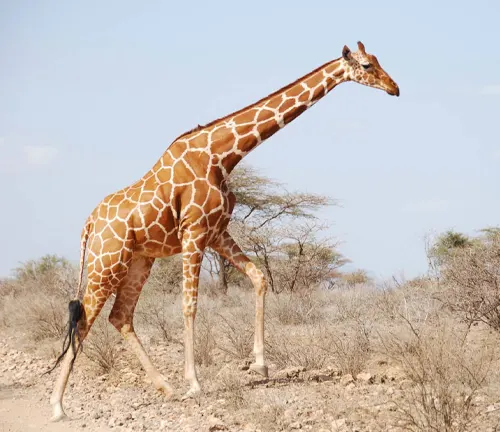
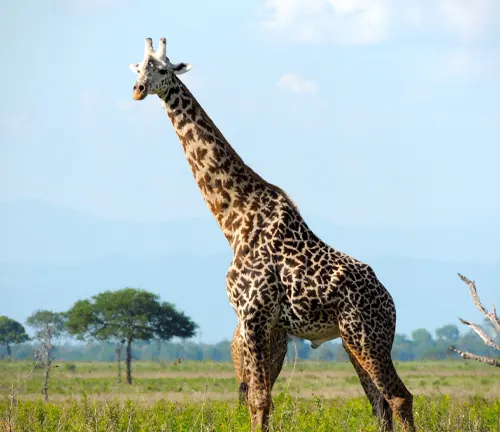
Masai Giraffe
(Giraffa camelopardalis tippelskirchi)
Found in East Africa, particularly in Kenya and Tanzania. It has jagged-edged spots that are less geometrically shaped compared to the reticulated giraffe, and they often extend down the legs.
Rothschild’s Giraffe
(Giraffa camelopardalis rothschildi)
Endemic to Uganda and parts of Kenya, with smaller populations in South Sudan and Ethiopia. This subspecies has large, dark brown patches that are less jagged than those of the Masai giraffe.

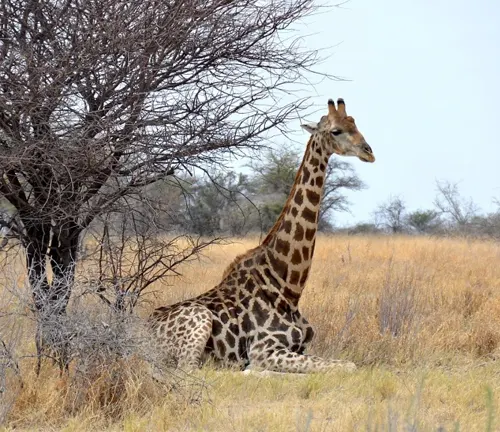
Angolan Giraffe
(Giraffa camelopardalis angolensis)
Inhabits the woodlands of Namibia, Botswana, Zambia, and Zimbabwe. It has large, irregular spots with a yellowish background color.
South African Giraffe
(Giraffa camelopardalis giraffa)
Found in southern Africa, including South Africa, Namibia, Botswana, and Zimbabwe. It has large, rounded spots that may extend down the legs, with a cream-colored background.
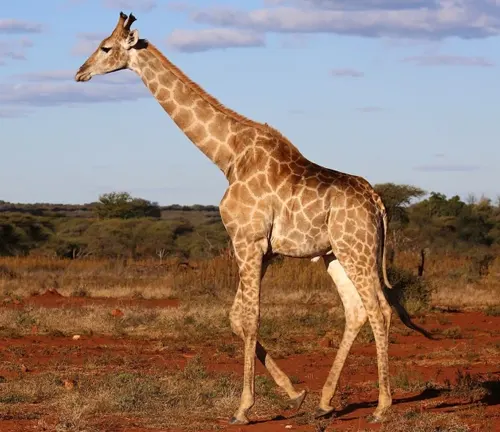
Frequently Asked Questions (FAQs)
- Are giraffes endangered?
While giraffes are not currently classified as endangered, their populations have declined significantly in recent years, leading to concerns about their long-term survival. - How many species of giraffes are there?
There is currently only one species of giraffe, Giraffa camelopardalis, but there are several recognized subspecies based on variations in coat patterns and geographic distribution. - What is the lifespan of a giraffe in the wild?
In the wild, giraffes typically live for about 20 to 25 years, although individuals in captivity may live longer. - Why do giraffes have long necks?
Giraffes have long necks to reach high branches and foliage for feeding. Their unique anatomy allows them to browse on leaves and twigs that other herbivores cannot reach. - Do giraffes make any sounds?
Yes, giraffes make various sounds, including grunts, snorts, and bleats. They also communicate through body postures and visual signals. - How tall is a baby giraffe when it’s born?
Newborn giraffes, called calves, are typically around 6 feet tall (1.8 meters) at birth and weigh about 100 to 150 pounds (45 to 68 kilograms). - Do giraffes sleep standing up?
Yes, giraffes often sleep standing up, but they also lie down to rest, usually for short periods of time. - Are giraffes social animals?
Yes, giraffes are social animals that form loose-knit groups known as towers or herds. These groups typically consist of females and their offspring, with adult males sometimes forming smaller bachelor herds. - How fast can a giraffe run?
Giraffes can run at speeds of up to 35 miles per hour (56 kilometers per hour) over short distances, making them capable of escaping predators such as lions. - What is the purpose of a giraffe’s ossicones?
Ossicones are bony protrusions on the top of a giraffe’s head covered in skin and hair. They play a role in thermoregulation and may also be used in combat during mating rituals and dominance displays. - How do giraffes drink water?
Giraffes have to splay their legs and bend down awkwardly to drink water due to their long necks. They can drink large quantities of water at once to compensate for their infrequent access to water sources. - Are giraffes monogamous?
Giraffes do not form monogamous pairs. Mating is typically polygynous, with dominant males mating with multiple females during the breeding season. - What are the predators of giraffes?
Lions, hyenas, and crocodiles are among the main predators of giraffes, particularly targeting calves and weaker individuals.


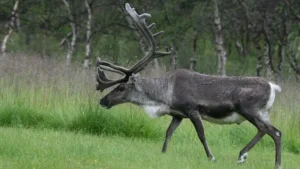

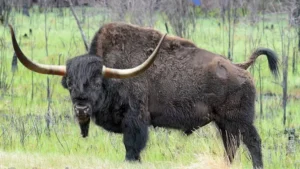


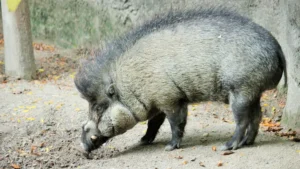
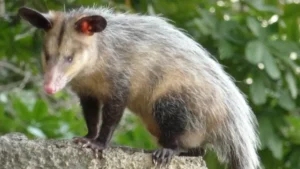
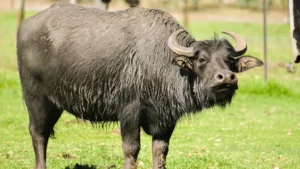




Leave your comment